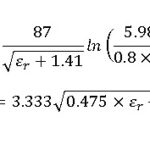What does UniFi Controller do?
In today’s digital world, managing and optimizing a wireless network is crucial, especially when you have multiple access points (APs) and other network devices. This is where the UniFi Controller comes in. If you’re managing a UniFi network, let me walk you through its role and functions.
The UniFi Controller is a software application developed by Ubiquiti Networks. It serves as the central management platform for UniFi network devices, including access points, switches, routers, and security gateways. Think of it as the “brain” of your UniFi network. It allows you to manage and monitor all UniFi devices from a single interface, ensuring that your network runs smoothly and efficiently. As we discussed in previous articles about networking, central management of devices makes life much easier for network administrators and even home users who want more control over their setup.
So, what does the UniFi Controller actually do? Here’s an overview:
- Network Configuration: The UniFi Controller allows you to configure all your UniFi devices. This includes setting up Wi-Fi networks, adjusting security settings, and managing advanced features like VLANs and QoS (Quality of Service).
- Real-Time Monitoring: One of the key features is its ability to provide real-time network monitoring. You can see device status, traffic usage, signal strength, and other important metrics, helping you identify potential issues or optimize performance.
- Firmware Updates: The UniFi Controller simplifies the process of updating firmware for all UniFi devices on your network. This ensures that your network remains secure and up to date with the latest features and bug fixes.
- User Management: You can easily manage users who are connected to your Wi-Fi network. Whether it’s setting up guest networks, applying bandwidth limits, or using advanced authentication options, the controller provides all the tools you need to control access.
- Analytics and Reporting: The UniFi Controller also generates reports on network performance, usage patterns, and device statistics. This helps with capacity planning, troubleshooting, and optimizing your network’s performance.
To simplify things further, think of the UniFi Controller as the control panel for your entire UniFi network. Just like how a car dashboard gives you an overview of the car’s performance, the UniFi Controller provides you with insights into your network’s health, allowing you to tweak settings as needed.
For example, if you have multiple UniFi access points spread across a building, the UniFi Controller can ensure they are all working together efficiently. It will help balance the load between APs, ensure consistent coverage, and even help you troubleshoot any potential issues with connectivity or performance.
In earlier articles, we explored how networks rely on centralized management, and now, with the UniFi Controller, you can take advantage of these capabilities in a way that’s both accessible and powerful. Whether you’re running a small home network or a large enterprise deployment, the UniFi Controller streamlines network management and makes everything easier to handle.


